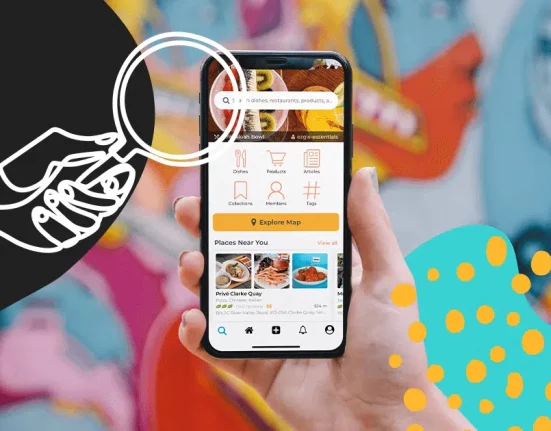Portfolios are the new CVs for Digital Marketers. This stands true for any position you’re applying for – be it Social Media Marketing, SEO Marketing – you get the gist, a portfolio will bring your skills to life. Which is why, in a creative field like this, companies and applicants alike, favour this approach over the traditional Resume.
And guess what? You can create a portfolio even if you don’t have work experience!
Don’t know where to start on your digital marketing portfolio? We’re here to show you how😎
What makes a Digital Marketing Portfolio?
A Digital Marketing portfolio consists of the projects you’ve taken up, your qualifications, the tools part of your skillset, etc. Creating a portfolio, allows for visual representation of your best work and is more effective in impressing recruiters.
The Basics of your Portfolio
In a nutshell, every portfolio must have the following things:
- A short introduction about yourself (keep it mostly around your career)
- Your Resume or CV
- Your Contact Details (include your phone number, email address and relevant socials)
- The best projects you’ve worked on
- Testimonials from the people that have mentored you or worked with you (you can add a way to contact them as well)
How to Personalise your Digital Marketing Portfolio for your desired job role

Digital Marketing is a vast and diverse field, with different areas requiring different skills. Now traditionally, portfolios were printed and distributed. But times have changed, and now building your own website to showcase your portfolio is the norm. What’s more, you can also add a link of your portfolio to your resume, making it easy for the recruiters to see your depth of work.
You can use platforms like Wix or Linktree to build your portfolio. If you’re a content marketer, publishing your blogs on sites like Medium can work too. Otherwise, creating a simple deck on Google Slides, Powerpoint is always a wise choice.
Another thing to bear in mind is that no 2 portfolios are the same. A social media manager’s portfolio will differ vastly from that of a performance marketer’s.
Your portfolio should be customised to showcase your area of specialisation. Depending on the role you’re interested in, these are the things to include in your portfolio:
Content Marketing/Copywriting
- Blog post links
- Newsletter snippets
- Scripts
- Screenshots of Landing Pages / Websites
- Posts/Advertisements with your copy
- Add graphs to showcase metrics like:
- Increase in conversion rates
- Increase in organic traffic
- Click through rates for your blogs etc.
- Conversion rates on your Ads etc.
Social Media Marketing
- Links or Files of your Social Media Posts
- You can showcase a problem statement and your plan to address it
- Use graphs and charts to showcase growth in:
- Followers for your page or your clients
- Engagement
- Conversions and Cost optimization for paid campaigns
- Increase in website traffic after a successful paid campaign or an increase in sales
Video Marketing
- Thumbnails or links to your videos
- Include multiple projects that showcase your diversity as a Video Marketer
- Graphs or charts to showcase your increase in:
- Subscribers or Followers
- Likes, comments and engagement
- Increase in avg watch duration
Email Marketing
- Screenshots or a PDF of your emails
- Graph showcasing an increase in:
- Email Open rates
- Click Through rates
- Website Traffic – if the aim is to direct consumers to the website via the Newsletter
- Increase in subscribers or a decrease in unsubscribe rates
SEO Marketing
- Add a problem statement and a strategy you used to overcome it (you can use Venn diagrams or charts to make the strategy more visual)
- Add a copy of your Keyword Optimization plan/s
- Graphs showcasing an increase in:
- Organic Traffic
- Product purchases or sales
- Any other relevant metric
Influencer Marketing
- List of influencers / brands you’ve worked with – Add their images, links to their relevant profiles if possible
- Add links to the campaigns you’ve been a part of
- Graphs to show an increase in Followers and Engagement
Before we move ahead, a small piece of advice: Make a copy of all your work. In the case you are adding links to work published on third party websites or profiles, you can never have control on when that work is taken down. To be on the safe side, provide both links and a PDFof your work. In the case of social media posts or emails, take high quality screenshots and convert them into PDFs. Your work is precious and one can never really be too careful.
Don’t have Work Experience? Here’s what you can do!
One of the best things about this field is that it is constantly embracing outsiders – you just need to have a creative mind, an eye for detail and a good hang of numbers. Et Voila! (with a few hurdles), you’ve become a Digital Marketer.
And the great news is that – you can create a portfolio too!
If you have no prior work-ex you can do the following:
Add any kind of project you have worked on
This can include school or college projects, any personal project you’ve taken up, you can also create samples or dummies for the sole purpose of showcasing your talent. For example, if I were applying for a content marketing job, I would come up with a prompt and write on that. These portfolios will obviously not contain any graphs or metrics to showcase – and that is ok!
Get experience without a job!
A full-time position is not the only way to gain Marketing experience! Look within your circles or reach out to people online for the following:
- Work Pro-bono – Offer your services for free to your friends and family; reach out via Linkedin or Instagram and get in touch with individuals to work on small projects
- Volunteer – Nonprofits and charitable organisations are always strapped for people that can drive their cause ahead. Volunteer work also looks great to your potential clients and will actually benefit the organisations you work for!
- Internships – Joining at entry-level positions needs practically no experience. Internships are a great way to work with big organisations and actually learn new tools and skills you would not have otherwise gotten!
- Take up a Digital Marketing course! There are a plethora of Digital Marketing courses available online. The best part of this method is that you will get to learn from industry experts, interact with like minded people and learn a diverse set of tools and skills. Most courses will also give you projects to work on – effectively increasing the value of your portfolio.
Conclusion

A Digital Marketing portfolio is a great way to visually show your recruiters your work and your key areas of expertise. If you’re uncertain about your portfolio and want to add more to it, consider joining a Digital Marketing course.
upGrad Campus offers a holistic, Job-ready Digital Marketing Program that covers all the tools and the skills to become a terrific Digital Marketer! With the portfolio our students built, they got placed in companies like Amazon, Flipkart, Myntra and more!
So if you’re interested in building a winning portfolio, with coveted skills like SEO, Social Media Marketing, Performance Marketing and more, head over to upGrad Campus today!






